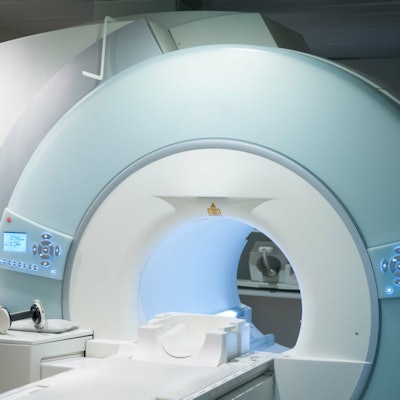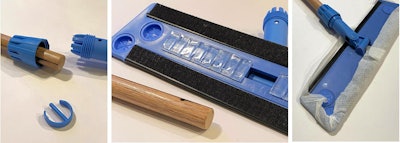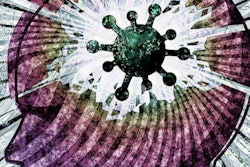
A resourceful team of researchers has developed a simple, low-cost MRI bore cleaning kit to minimize the risk of COVID-19 cross-infection. Unable to find definitive guidance or suitable commercial products, the group has decided to push ahead with its own solution in an attempt to ensure patient safety.
"We think the system will let us clean the bore and complement the cleaning of the more accessible parts of the scanner and room, air exchanges, etc." Dr. Catherine Mandel, MRI radiologist at Swinburne University of Technology, Melbourne, Australia, told AuntMinnieEurope.com. "Our bottom line is that as a research MRI scanning unit, we have to absolutely minimize risk."
 We must absolutely minimize risk, said Dr. Catherine Mandel.
We must absolutely minimize risk, said Dr. Catherine Mandel.Facemasks with a metal noseband are not compatible with MRI scans of the head, and even if they are not ferromagnetic, there would still be an artifact, she explained. Also, the use of functional MRI means it is essential to eliminate anything that will affect the patient's ability to perform tasks, distract the person, or otherwise affect the validity of the results. She was concerned that adding a shield to the head coil would not stop aerosols, even though it would collect most droplets.
"As a research MRI unit, we have to put participant safety first, to an even higher level than in clinical practice as there is no potential gain for the research participants -- unlike patients, where the benefit in terms of diagnosis should outweigh any risk," Mandel noted. "Consequently screening and cleaning need to be of the highest standard."
Many of the research MRI scans take an hour, so there is an increased risk of viral contamination inside the bore of the MRI, based on the principle that increased time equals increased risk, she added.
The Melbourne solution
Between August and October, the university remained closed to almost all staff as part of the COVID-19 restrictions in the state of Victoria, which also meant that no research participants were allowed on site. This situation provided an opportunity to do the necessary legwork and determine how best to clean the scanner, Mandel explained.
 Practical-minded technician Paris Lyons.
Practical-minded technician Paris Lyons.The search for suitable cleaning equipment was led by Paris Lyons, academic & magnetoencephalography (MEG) technician at Swinburne University of Technology's Centre for Mental Health & Swinburne Neuroimaging Facility, which is a node/operational partner of the Australian National Imaging Facility. The chief radiographer was kept up to date remotely.
"Paris' MEG role is very much hands-on, and she is a really practical person," Mandel continued. "She was able to test out the items with a magnet before deciding which were the best to buy."
For less than 30 Australian dollars (18 euros), Lyons bought a blue flat mop. It was the only one she could find that was completely free of metal -- other than the handle, which was removable. She bought a piece of dowel (wooden cylindrical rod, measuring 22 mm x 1,200 mm) to replace the metal handle. She then drilled a hole in the dowel for the plastic pin to go through and sanded the dowel and sealed it with varnish to ensure it was nonporous.
 The Melbourne group's MRI bore cleaning kit. Photos courtesy of Paris Lyons.
The Melbourne group's MRI bore cleaning kit. Photos courtesy of Paris Lyons."If others are looking to replicate this, a piece of PVC pipe could be used as a handle and wouldn't require any treatment," Lyons commented. "The plastic mop head is quite long (400 mm) but can easily be cut down if we want it to be smaller."
She didn't have large alcohol wipes, so she tested it with some baby wipes, which stick really well to the Velcro. Because the Velcro is raised above the plastic head by about 2 mm, she adhered some plastic bumpers to the middle of the mop head to raise the wipes up so they contacted the curved surface being cleaned.
"I did some test cleaning with the finished product at home, and it works perfectly," continued Lyons, adding that the dowel for the handle cost 12 Australian dollars (7.3 euros), and the little clear adhesive rectangle bumpers were 5.30 Australian dollars (3.2 euros) for 16 pieces, making a grand total of around 46 Australian dollars (27.5 euros) for the finished product.
Looking to the future
The next step is to develop a screening list to minimize the risk of scanning anyone who may be infectious, exposed to someone who may be infectious, or at increased risk if they became infected. The group will be minimizing contact with participants, maintaining physical distancing as much as possible, using facemasks and eye protection, according to Mandel.
"We are yet to test the kit in the MRI as we are not allowed on the campus due to the working from home restrictions still in force, but we intend to try it out as soon as we can," she said.



















